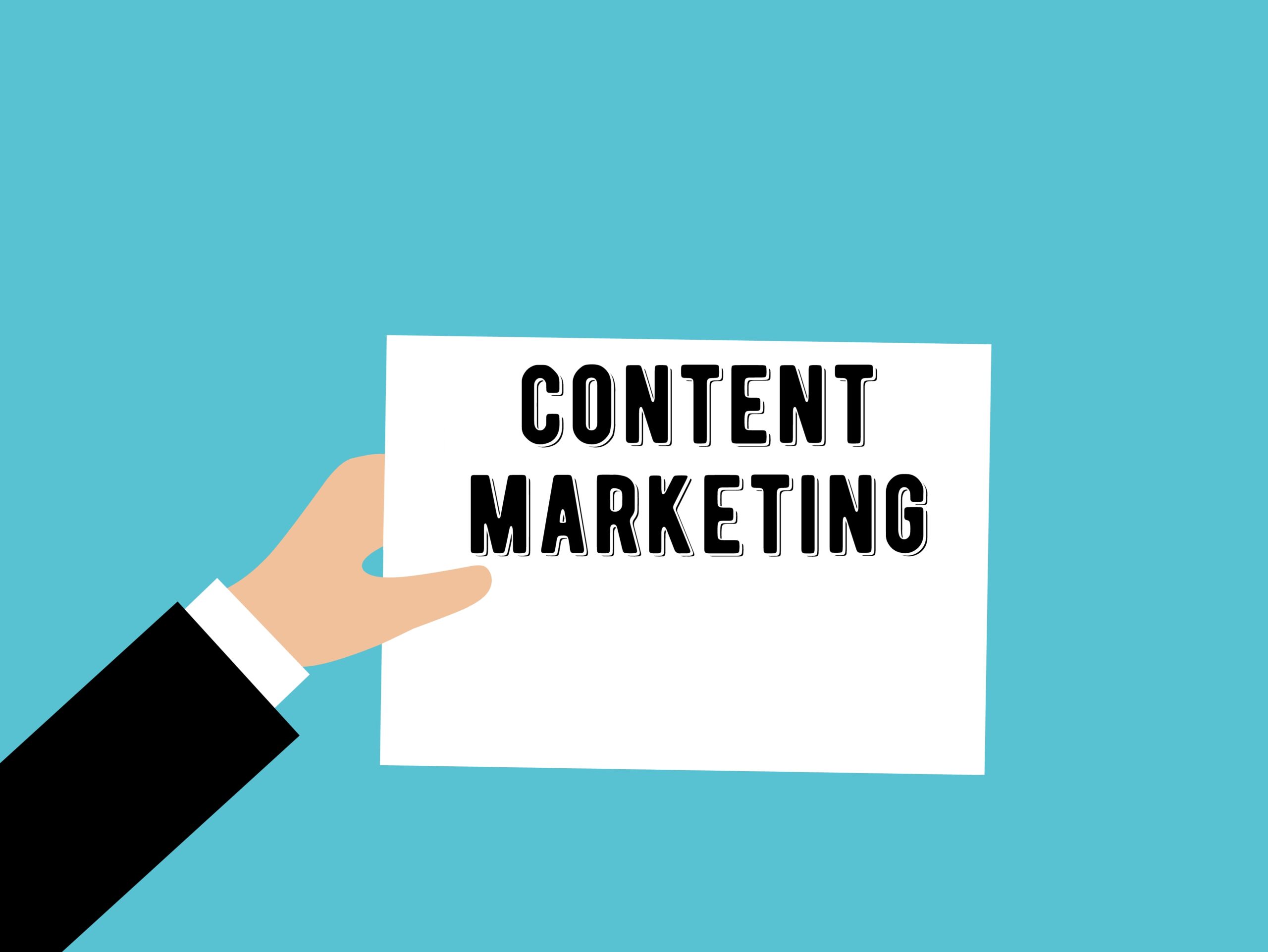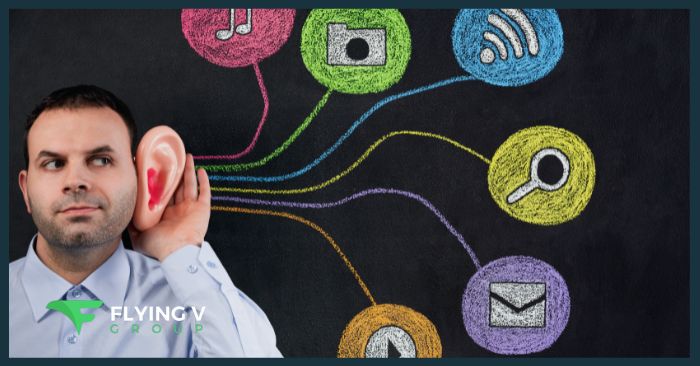The conversation around ‘Content Marketing vs Advertising’ is more relevant now as preferences shift towards genuine, value-focused brand interactions, moving away from traditional advertising to content marketing.
This article will clarify the key differences between these strategies, helping you make informed decisions on where to invest your marketing energy. Knowing what sets them apart is crucial for anyone aiming to meet evolving consumer expectations and succeed in the current market.
Defining the Terrain of Content Marketing vs Advertising
In navigating the complexities of modern marketing strategies, it’s essential to understand the foundational elements that distinguish content marketing vs advertising.
What is Advertising?
Traditional advertising represents the cornerstone of direct promotion, characterized by:
- Its paid nature, requiring businesses to buy media space.
- A focus on direct messages aimed at selling a product or service.
- Utilization of various channels such as TV, print, radio, and online ads.

What is Content Marketing?
In contrast, content marketing centers around:
- Building lasting relationships with the audience.
- Providing value through relevant, informative, and engaging content.
- Tactics include blogs, social media posts, ebooks, and videos aiming to educate, entertain, or solve specific problems.
Philosophical Differences
The core philosophical divide between the two lies in their approach to engaging with consumers:
- Interruptive Advertising: Seeks to capture attention through unsolicited means, often interrupting the consumer’s current activity. This method aligns with traditional consumer preferences for clear, direct promotional messages but faces challenges in an era where many prefer to control their media consumption.
- Permission-Based Content Marketing: Focuses on creating content that consumers seek out and willingly engage with, building trust and authority over time. This approach is increasingly favored as it respects the consumer’s choice and offers value beyond mere promotion, aligning more closely with the desire for authenticity and personalized experiences.

Understanding these distinctions is vital for businesses aiming to resonate with today’s consumers and carve out a competitive edge.
Cost Implications and ROI
Understanding the financial aspects of marketing strategies is key to optimizing budget allocation for the best returns on investment (ROI).
Cost-Effectiveness of Advertising and Content Marketing
Advertising:
- Requires significant upfront investment for media buys and production.
- Offers quicker visibility and potential returns but at higher costs.
- Cost-per-acquisition (CPA) can be high, impacting overall ROI.
Content Marketing:
- Initial costs may be lower, focusing on content creation and organic reach.
- Long-term investment in creating valuable content can lead to sustained engagement and lower CPA over time.
- Potential for high ROI as content continues to attract and convert with minimal ongoing investment.
Measuring ROI
For Advertising:
- Track metrics such as impressions, clicks, conversion rates, and overall sales generated from specific campaigns.
- KPIs include Return on Ad Spend (ROAS) and CPA.
For Content Marketing:
- Measure engagement through page views, time on site, social shares, and conversion rates from content pieces.
- Key KPIs include Cost per Lead (CPL) and customer lifetime value (CLV) improvements attributable to content initiatives.
Both strategies require careful analysis of costs versus benefits, with content marketing often providing better long-term value and advertising offering faster, albeit costlier, results. Businesses must consider their goals, budget, and target audience to determine the most cost-effective mix.
Audience Engagement and Relationship Building
Engaging audiences and building lasting relationships are pivotal in modern marketing, yet advertising and content marketing approach these goals differently.
Advertising for Brand Recall
- Advertising aims for immediate impact, emphasizing brand visibility through repetitive exposure.
- Strategies focus on memorable slogans, jingles, and visuals to enhance brand recall.
Content Marketing for Advocacy
- Content Marketing nurtures deeper connections by providing valuable, relevant content.
- Businesses can turn satisfied customers into brand advocates by addressing customer needs and interests.
- Strategies include creating shareable content, engaging in social listening, and encouraging user-generated content to foster a community around the brand.

While advertising creates top-of-mind awareness, content marketing builds trust and loyalty, essential for long-term customer relationships and advocacy.
Impact on the Buyer’s Journey
Both advertising and content marketing play distinct roles across the buyer’s journey, from sparking initial awareness to guiding the final decision.
Advertising: Sparking Interest
- Awareness Stage: Advertising captures attention quickly, introducing the brand to potential customers.
- Utilizes broad messaging to create initial interest and recognition.
Content Marketing: Nurturing Decision
- Consideration and Decision Stages: Content marketing provides depth, offering detailed information, comparisons, and educational content.
- Helps consumers understand their needs and how the brand meets those needs, leading to informed decisions.
Integrating for a Cohesive Journey
- A strategic mix of advertising to generate awareness and content marketing to nurture leads can create a seamless funnel.
- This integration ensures continuous engagement, moving potential customers smoothly from discovery through consideration to the decision stage, enhancing lead conversion rates.
Longevity and Content Lifespan
The lifespan of marketing content significantly impacts its long-term value and effectiveness, with notable differences between advertising campaigns and content marketing efforts.
Advertising Campaign Lifespan
- Short-Term Impact: Advertising campaigns often have a predefined duration, offering immediate but transient visibility.
- Their influence wanes once the campaign ends, requiring continual investment for sustained brand presence.
Content Marketing Longevity
- Evergreen Appeal: Content marketing focuses on creating evergreen content that remains relevant and valuable over time.
- Sustained Attraction: This content continues to attract and engage new audiences, driving ongoing traffic and conversions without additional investment.
The Role of Evergreen Content
- Evergreen content serves as a cornerstone for long-term digital marketing strategies, consistently supporting SEO efforts and providing a continuous source of leads.
- By strategically updating and repurposing evergreen content, businesses can maximize its lifespan and ROI, reinforcing content marketing’s advantage in sustainability and cost-effectiveness.
Adaptability and Trends
In the dynamic marketing landscape, content marketing and advertising continuously evolve to meet the shifts in technology, consumer behavior, and market trends.
Adapting to Change
Advertising:
- Technological Advances: Rapid adoption of digital platforms has transformed advertising into a more targeted and interactive experience, leveraging data analytics for precision targeting.
- Consumer Behavior: Advertisers increasingly embrace social media and programmatic advertising to reach consumers where they spend most of their time.
Content Marketing:
- Consumer Preferences: Content marketing has shifted towards storytelling and authenticity, reflecting consumers’ preference for genuine brand interactions.
- Technology Integration: The use of SEO, multimedia content, and interactive tools has become standard, enhancing user engagement and content discoverability.
Future Developments
Predictions for Advertising:
- Advancements in AI and machine learning will further refine targeting and personalization, making ads more relevant and less intrusive.
- Augmented reality (AR) and virtual reality (VR) could redefine immersive advertising experiences.
Predictions for Content Marketing:
- AI-generated content and personalization engines will tailor content to individual user preferences on an unprecedented scale.
- Voice search optimization and video content will dominate, catering to the growing use of smart speakers and preference for visual media.
Both fields will continue to innovate, with a shared emphasis on personalization, technology integration, and adapting to consumer needs, shaping the future of marketing strategies.
Navigating the Future of Marketing: Content vs Advertising
In today’s marketing landscape, falling behind in the “content marketing vs advertising” discussion could limit your brand’s growth. Crafting an effective marketing strategy that bridges traditional and modern approaches can seem daunting. The dilemma of where to allocate resources for the best return on investment is a common challenge.
At Flying V Group, we’re in tune with the latest marketing trends. Our strategies help you blend the strengths of both content marketing and advertising, ensuring your brand not only keeps up but leads the pack.
Choose Flying V Group to elevate your marketing game and see exceptional results. Join the many businesses that have flourished by partnering with us. Ensure your brand stands out, rather than being left behind.
FAQs
Is content marketing the same as advertising?
No, content marketing and advertising are not the same. Content marketing focuses on creating and distributing valuable, relevant content to attract and engage a specific audience, while advertising directly promotes a product or service to a broader audience.
What is the difference between media content and advertising?
Media content refers to information, stories, and entertainment provided through various channels, aiming to inform or entertain. Advertising uses these channels to directly promote products or services to consumers, often within the media content itself.
What is the difference between advertising and marketing?
Advertising is a subset of marketing, focusing on the direct promotion of products or services to create awareness or encourage sales. Marketing is a broader strategy that includes market research, product development, distribution, and communication, including advertising.
What is the difference between content marketing and PPC?
Content marketing involves creating and sharing valuable content to attract and retain a targeted audience organically. PPC (Pay-Per-Click) is an advertising model where marketers pay a fee each time their ad is clicked, aiming for immediate traffic.
Why is marketing better than advertising?
Marketing is not necessarily better than advertising but offers a comprehensive approach to understanding and meeting customer needs. It includes research, product development, and overall strategy, of which advertising is just one component, allowing for a more holistic business strategy.






0 Comments